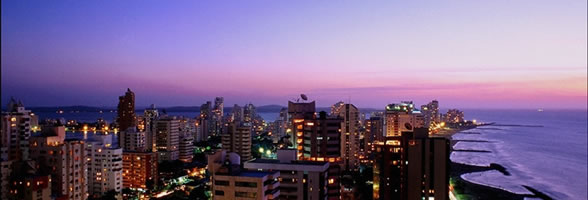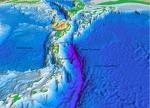
All about plate tectonics.
Effects of Plate Tectonics
If you have ever seen a mountain or volcanoe or even been in an earthquake, you have seen the effects of plate tectonics. Plate tectonics not only build and destroy they seperate. All of our continents used to be connected in the super continent of Pangea, but thanks to plate tectonics over thousnds of years they were seperated.
Convergant Boundries
Convergant boundries have many effects and are the most abundant on this planet. This type of boundry presses tectonic plates together: this creates earthquakes, mountains, volcanoes, and folds. Mountain's form in two different ways: either one or both plates are pushed up. Volcanoes happen when one plate is pushed under the other, that plate is melted into magma and pushes up through the formed mountain and spews lava. That last process is also a way to form geysers. Earthquakes occur when a rock breaks from the preasure of the colliding plates, the size of the earthquake depends on the size of the rock. A fold is a bend in layers of rock and can form a kind of wavy formation.
Divergent Boundries
Like convergent boundries, divergent boundries make many lasting effects and are the biggest reason that the continents are seperated by water. Thanks to divergent boundries we have falts, trenches, rift vallys, volcanoes, valleys, and continental drift. Falts that are created by divergent boundries are breaks in rocks that have both sides moving in relation to each other. Trenches form in the ocean when two plates move away from each other, when this happens under water volcanoes can form. As the plates move away magma moves up and spews out between the cracks. Continental drift happened in four main stages: Pangea forms, Laurasia and Gondwana break apart, Laurasia forms into North America and Eurasia and South America moves away from Africa, and finaly we get to the Present day.
plates move away from each other, when this happens under water volcanoes can form. As the plates move away magma moves up and spews out between the cracks. Continental drift happened in four main stages: Pangea forms, Laurasia and Gondwana break apart, Laurasia forms into North America and Eurasia and South America moves away from Africa, and finaly we get to the Present day.
Transform Boundries
Unlike the other boundries, a transform boundry does more destroying than building. As the plates slide past each other they can do many things to the earth: such as create volcanoes, faults, and earthquakes. As the plates slide past each other big rocks get pushed in between, and as the rock shatters it creates a wave of energy that we call an earthquakes. The plates are also uneven so sometimes a fault, or break in a rock formation, occurs as they slide past each other so very slowely. One of the most famous falts is the San Andreas fault. A volcanoe can also form in the same way; that's how the Hawiian islands were formed.






